The Republic of Maldives is an island nation located in the Indian Ocean, famous for its stunning ocean views, white sandy beaches, and luxurious resorts. While these are enough reasons for many to spend money visiting this paradise, the nation also has a special island that attracts tourists for a completely different reason: the Sea of Stars phenomenon.
This natural light display is caused by bioluminescent plankton in the waters surrounding Vaadhoo Island, which emit blue light under certain conditions, creating a dreamlike scene.
For those lucky enough to witness it, it is a once-in-a-lifetime experience.

This unique beach is called Glowing Beach located on Vaadhoo Island – one of the few inhabited islands in the Raa Atoll. It is situated about 140 km north of the capital, Male, of the Maldives.
The Sea of Stars in Maldives
Anyone who has been to the Maldives can appreciate the beauty of its beaches. This South Asian nation lies on the equator in the Indian Ocean and consists of 26 atolls and around 1,190 coral islands.
Each year, over a million tourists flock to the Maldives’ islands, known as a luxury destination for honeymoons and vacationers.
Among the many beautiful beaches in the country, one stands out: Vaadhoo Beach, a small island in the Raa Atoll with only about 500 residents. There, the seawater can emit a blue light, and this phenomenon is most visible at the end of summer and the beginning of autumn.
Locally known as “Redhan lun”, this phenomenon is also called “Sea of Stars” due to its incredible resemblance to stars in the night sky.
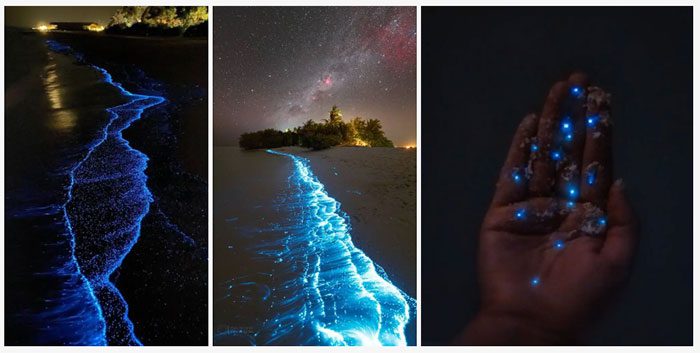
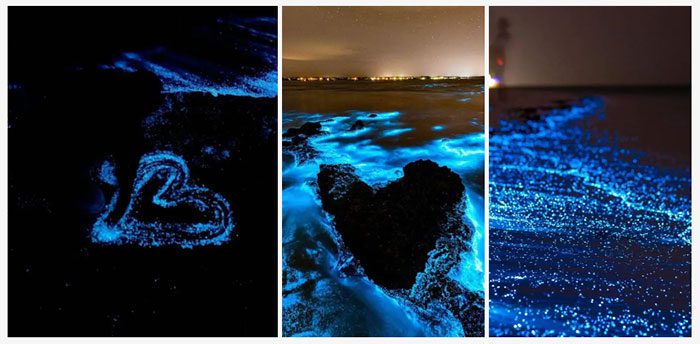
The cause of this strange natural phenomenon has been confirmed by scientists. The bioluminescence is produced by a type of marine algae known as “dinoflagellates.” Woodland Hastings, a professor at Harvard University, conducted research on this peculiar organism and discovered that their cell membranes contain a special channel that responds to surrounding electromagnetic signals, resulting in luminescence within their bodies.
While this light can appear on several beaches around the Maldives, Vaadhoo Island is considered the prime location to see it. Not everyone who visits the Maldives can witness this fascinating natural phenomenon, as it occurs randomly and depends on several conditions, including climate and the development of bioluminescent plankton.
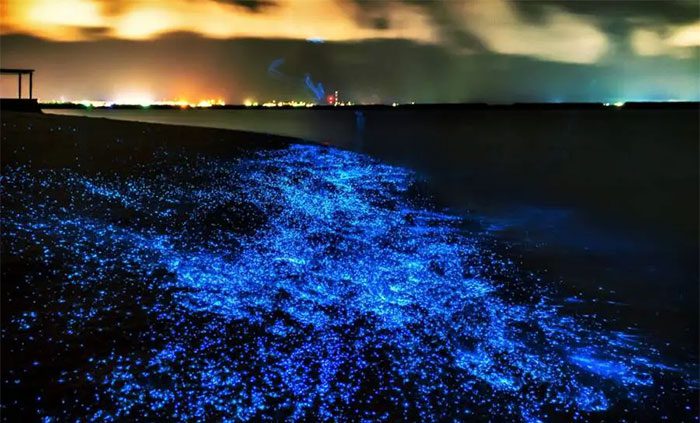 The population of these bioluminescent algae varies depending on temperature, salinity, and the depth of the sea. Therefore, you won’t always see this extraordinary natural phenomenon.
The population of these bioluminescent algae varies depending on temperature, salinity, and the depth of the sea. Therefore, you won’t always see this extraordinary natural phenomenon.
In fact, the electric blue light of this phenomenon comes from a chemical reaction known as bioluminescence. When dinoflagellates, a type of tiny plankton, are disturbed by water movement, they can release a chemical called luciferin. When luciferin mixes with oxygen, it causes the plankton to emit blue light.
This remarkable reaction acts as a defense mechanism against predators, but it can also be triggered by harsher marine conditions. Fortunately, bioluminescence is not harmful to humans, and we can safely touch and swim in the water.
However, the same cannot be said for predators. Animals unfortunate enough to consume these microorganisms will begin to glow, attracting larger predators, ultimately leading to their demise.
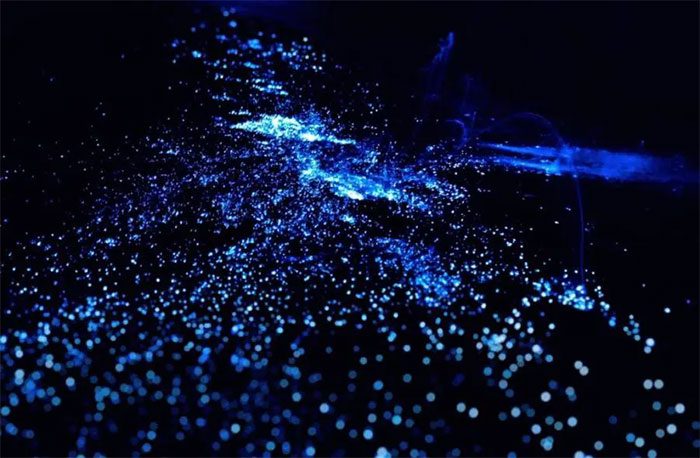
According to locals, this spectacular event commonly occurs from late summer to near the end of the year. However, in reality, it is quite difficult to predict the exact time and location of the phenomenon.
Where else can you see bioluminescence?
For those who do not get the chance to see the Sea of Stars in the Maldives, this spectacle can still be observed in other places, as bioluminescent organisms can drift in the waters of several other beaches around the world.
Beaches exhibiting the Sea of Stars phenomenon can be found everywhere from Leucadia in California, to Mosquito Bay in Puerto Rico, to the Lakshadweep Islands in India.
For those unable to journey to any of these places, popular films like “Life of Pi” can also showcase the stunning beauty of bioluminescent organisms on screen.
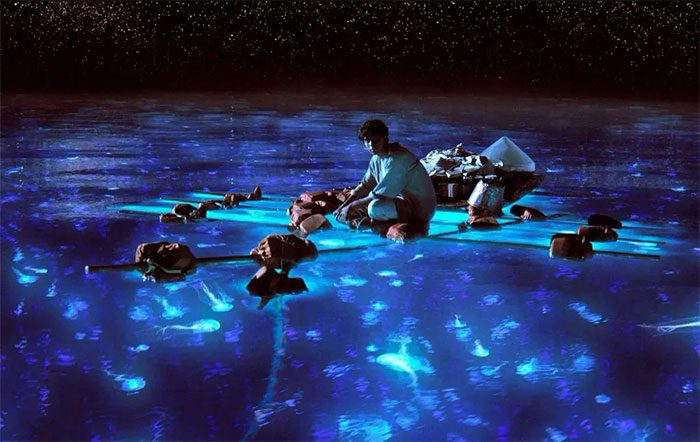
A scene from the movie “Life of Pi,” where the main character is guided by bioluminescent organisms.


















































